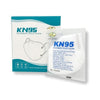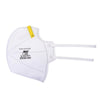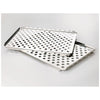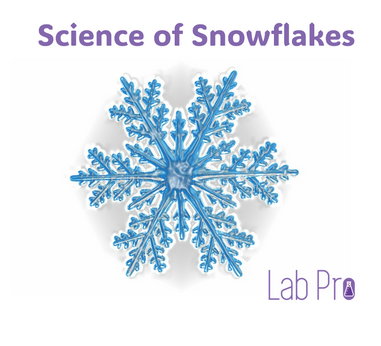- No products in the cart.
Science teachers across the country are enriching student's learning with science kits. It's never been easier for elementary school teachers to college professors to get science kits in their student's hands to help with distance learning.
Distance Learning Science Kits
Covid 19 has forced science teachers to look at new and innovative ways to educate students while being on a Zoom calls. Science learning kits are one of the best available solutions. The Science kits are designed with student in mind and contain everything a student needs to participate in a successful classroom laboratory in the comfort of their home. Bench-tested and written by in-house educational experts and teachers, Distance Learning kits contain everything you need for successful classroom experiments and demonstrations from elementary school to the university level. The kits include:

- Chemicals
- Lab supplies
- Teacher’s Manual and Student Guide
Popular science learning kit topics include:
- AP Biology
- AP Chemistry
- Elementary Science
- Life Science / Biology
- Environmental Science
- Forensic Science
- Chemistry Demonstrations
- General Chemistry
- Green Chemistry
- Earth Science
- Consumer Science
- Microchemistry
- Biomedical Engineering
A complete teacher's guide, matched with student study guides, is provided as well. Below is a purchasing guide to some of the most popular science kits.
In this lab, students will gain an understanding of the basic differences between the properties of acids and bases, learn the role of hydrogen and hydroxide ions in acidic and basic substances, and comprehend the nature of the pH scale with regards to acid and base strength. Students will examine the effects of acids and bases on several pH indicators, determine the pH of several common household materials, and use the knowledge gained to determine the identity of four unknown solutions. Instruction Manual and enough materials for 2 groups are included.
This kit provides the most procedurally accurate simulation of the ABO/Rh blood typing technique available. In this activity, students test and determine the ABO/Rh blood types of four different simulated blood samples using Innovating Science's new simulated blood. Students simply combine the blood samples and antisera, gently agitate the blood typing tray, and observe the results – no toothpicks, no stirring, and no waiting for results required! Kit contains an Instruction Manual and enough materials for 2 groups of students.
Urinalysis Using Simulated Urine
Urinalysis is one of the oldest medical diagnostic tests, and is still one of the most commonly used tests to this day. In this activity, students will perform a urinalysis on four different samples of simulated urine. Using a standard urinalysis test strip, students will determine the pH of the samples and test for the presence or absence of glucose, protein, and ketones. Students will then analyze the results of the tests to determine a potential diagnosis for each patient. Kit contains an Instruction Manual and enough material for 2 groups of students.
Cellular Respiration-What Sugar Does Yeast Like Best
In this experiment, students will expose living yeast cells to three different sugars-glucose, sucrose, and lactose. The yeast cells should begin to utilize the sugars as a food source if they are capable of metabolizing them, and will begin to engage in aerobic respiration and/or fermentation. This activity allows students to understand that yeast may use different options for energy production, with varying degrees of effectiveness. A pH indicator will be used to indirectly determine the effectiveness of the three different sugars as a food source for the yeast. Kit contains an Instruction Manual and enough material for 2 groups of students.
Forensic Chemistry - Drug Detection
Everyone who ate the school cafeteria's chili became ill. Could someone have tainted the chili? You are a forensic toxicologist, and it is up to you to determine if any of the ingredients in the cafeteria could have been substituted for aspirin, which appears to have been stolen from the nurse's office. You will perform a series of chemical tests on the cafeteria ingredients and a control sample of aspirin, to determine if all the ingredients are what they are supposed to be. Kit contains an Instruction Manual and enough materials for 2 groups.
Forensic Chemistry Of Blood Typing
Blood typing is a method of classifying blood based on the presence or absence of specific proteins, called antigens, on the surface of red blood cells. Blood type, an inherited characteristic, is valuable to know as it affects medical procedures, such as surgery, transfusions, and paternity testing, as well as serving as evidence in criminal investigations. Determining the blood type of a suspect in a crime can help provide supporting evidence that they are guilty, or eliminate them as a possibility. In this activity, students will determine the blood type of simulated blood samples collected from a crime scene, as well as from two suspects, to determine the likelihood of the suspects' involvement in the crime. Kit contains an Instruction Manual and enough materials for 2 groups.
Forensic Chemistry Of Unknown Substances
When collecting evidence at a crime scene, investigators may encounter substances that they are not able to identify in the field. These substances will be sent to a crime lab, where a forensic scientist will work to analyze and identify them. In this experiment, students will take on the role of a forensic scientist and use their observation skills, senses, and a series of chemical tests to determine the identity of two mystery substances. Kit contains an Instruction Manual and enough materials for 2 groups of students.
Learn the role of the kidney in blood filtration and waste removal along with the many tasks performed by the functional units of the kidney, called nephrons, as well as nephron structure. Students will create an artificial kidney model to filter a simulated blood solution, and will be able to visually determine if filtration of the simulated blood occurred. They will also perform chemical tests on the resulting filtrate to detect any possible waste material that may have been removed by the artificial kidney. Kit contains an Instruction Manual and enough materials for 2 groups.
In this lab students will learn the history of the discovery of DNA and DNA structure. They will understand the nature of genetic inheritance and the role of DNA and proteins in genetic expression while using biological detergents, enzymes, and ethanol to isolate DNA from plant material. You will need to supply the plant material. Kit contains an Instruction Manual and enough material for 2 groups of students.
Chromatography is the oldest documented technique to separate chemical substances. In this activity, students will perform paper chromatography on three individual dyes, along with a mixture of dyes, to determine the composition of the mixture. Students will understand not only the components of a chromatography system, but also why different substances separate and move at different rates within the system. An Instruction Manual and enough materials for 2 groups are included.
Physical Characteristics Of Gases
Gases are for the most part invisible, and therefore cannot be observed as readily as a solid or a liquid. Because of this, they are often examined and analyzed through measurable physical characteristics such as volume, pressure, temperature, and moles (number of particles). These properties have simple, consistent mathematical relationships that led to the development of the gas laws (Boyle's, Charles's, and Gay-Lussac's), and eventually the ideal gas law. By using these relationships you can determine the value of an unknown property based on the other three, or predict the effect that varying one component will have on the others. In this activity, students will use the Innovating Science apparatuses and your temperature and pressure sensors to measure and plot the physical characteristics of a gas. Kit contains an Instruction Manual and enough materials for 2 groups of students.
The flame test is an analytical technique often used for the identification of certain elements, primarily metal ions. The color of the flame is observed, and the spectra of light emitted from the flame is viewed through a spectroscope. The traditional flame test poses safety concerns for students in a laboratory setting, however, this kit minimizes these concerns by utilizing small candles that are easier to manage. There is no loss in the clarity of the emission spectra, making it easy for students to observe and deduce what element is causing the colored flame. Kit contains an Instruction Manual and enough materials for 2 groups of students.
This lab allows students to learn about two forms of passive transport, diffusion and osmosis, and compare and contrast the similarities and differences between the two processes. Students will first investigate the process of diffusion, and determine the effect of solution temperature on the rate of diffusion of a solute. Then, they will set up an environment that is likely to facilitate osmosis, and gather data to determine whether or not osmosis occurred over a set period of time. Kit contains an Instruction Manual and enough material for 2 groups of students.
The Mohs hardness scale was invented by Friedrich Mohs in 1812, and has been a useful tool for geologists to determine the identity of different minerals. With this kit, students will become familiar with the Mohs hardness scale and how to perform the hardness test, allowing them to develop vital skills that will help them throughout their studies in earth science. This kit also provides students an opportunity to go out into their local environment to investigate the relative hardness of the minerals around them. Kit contains an Instruction Manual and enough materials for 2 groups of students.
Chromatography Of Plant Pigments
Chlorophyll is the most prevalent and well-known plant pigment related to photosynthesis. It is not, however, the only pigment necessary for photosynthesis to occur. Other pigments are also involved in the process, though they are often overlooked as they tend to be masked by the abundance of the green pigment chlorophyll. In this activity, students will use paper chromatography to separate the various pigments from a sample of plant pigment extract. Students will not only confirm the presence and learn the role of these "hidden" pigments, but will also learn about chromatography as a technique for separating molecules. Kit contains an Instruction Manual and enough materials for 2 groups of students.
Periodic Table- Nonmetals Metals, And Metalloids
During the nineteenth century, a Russian chemist named Dmitri Mendeleev began constructing a table of the elements. The result, called the Periodic Table of the Elements, is an organized classification of chemical elements based on certain properties of each element in relation to other elements. In this lab students will learn about three different categories of elements—metals, nonmetals, and metalloids. They will examine the physical properties of several elements and test their chemical reactivity, then use their results to classify each of the tested elements as either metal, nonmetal, or metalloid. Kit contains an Instruction Manual and enough materials for 2 groups of students.
This activity is a fun, safe way to teach students the effect a catalyst has on a chemical reaction. The decomposition of hydrogen peroxide can be visualized by mixing in a small amount of dish soap and adding yeast as a catalyst. As the reaction occurs, a large amount of foam is formed that flows up and out of the reaction bottle. This kit contains an Instruction Manual and enough materials to perform the demonstration twice.
Students will be introduced to acids and bases, and test a dilute acid and dilute base with neutral litmus paper to learn how pH strips indicate if something is acidic or basic. Then, they will test common items that could be found around their household to determine if they are acids or bases. Extra litmus paper is included if students want to test more items found in their home to gain a greater understanding of acids and bases. The kit contains an Instruction Manual and enough materials for 2 groups.
Getting Science Kits
All of the science kits shared above will enrich your student's learning through hands-on experience. Be sure to plan ahead and get your science kits sent out well in advance, so both teachers and students have them when needed.
For over 40 years, Lab Pro Inc. has been committed to delivering the highest quality science education tools, distance learning kits, lab supplies, chemicals, and cleanroom PPE apparel to teaching institutions and laboratories worldwide. To learn more, visit the biggest Lab Supply showroom in California, or contact us online or at 888-452-2776.












































